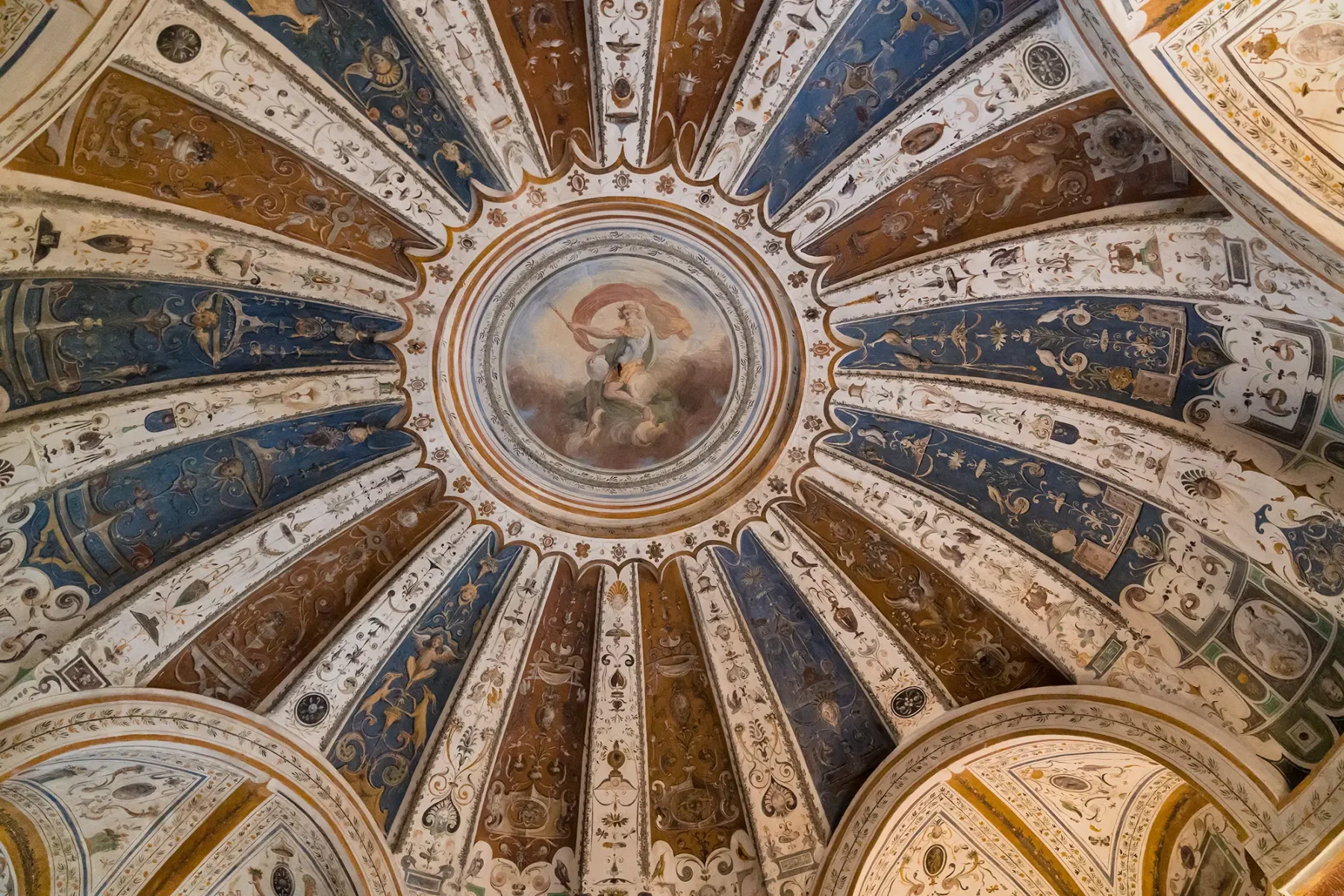The Frescoed Halls
Discover the magnificent decorated rooms
that tell the story of the history and art of Villa Miralfiore.
Map of Halls
Scroll sideways to view the entire map.
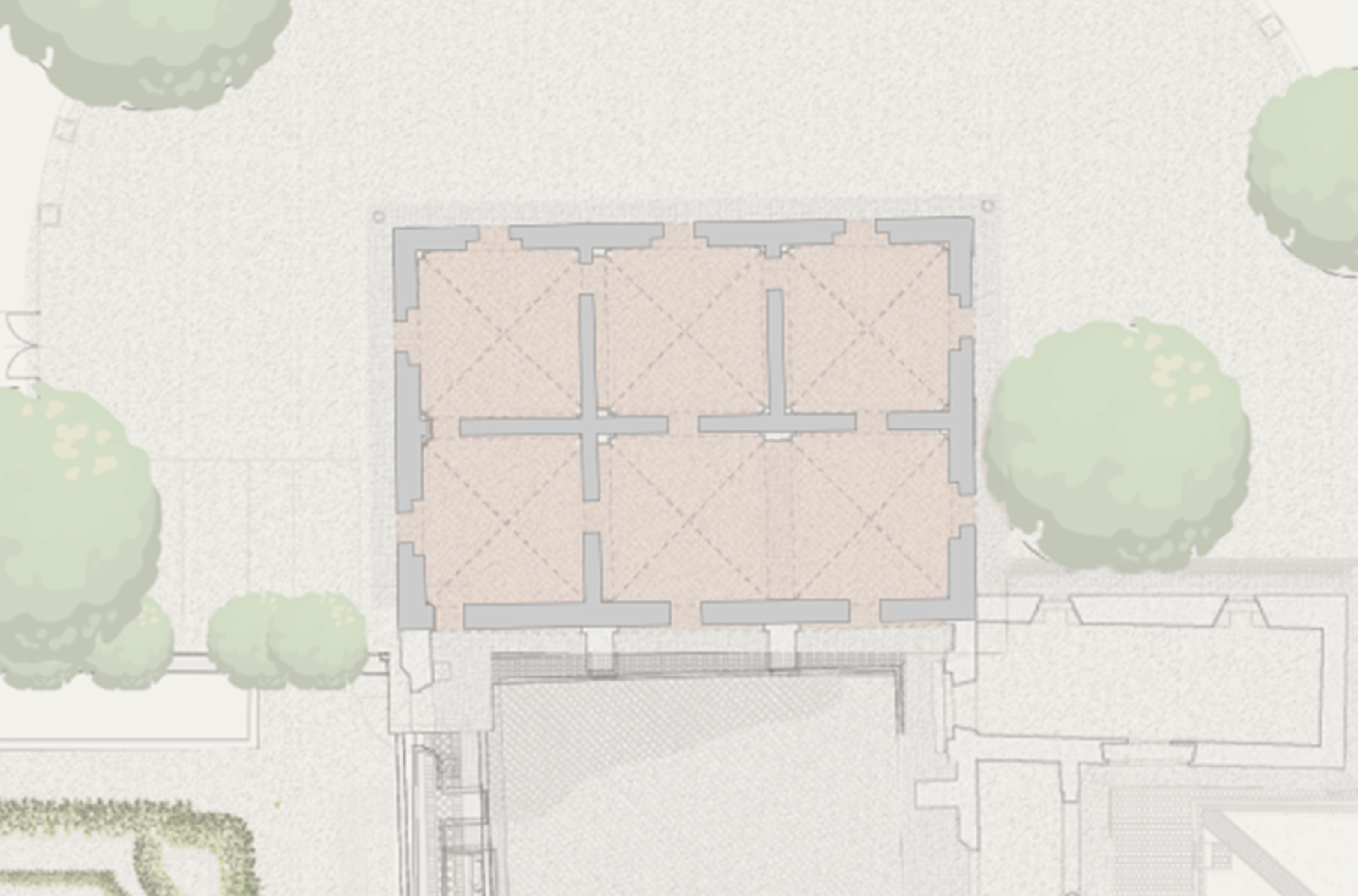
The Hall of Festivities
Room with "Weapon Motifs"
Room of Duchess Vittoria Farnese
Room with Apollo driving the Sun Chariot
Room of Jupiter
The Hall of Festivities
The salon is almost completely frescoed with 16th century ‘grotesque’ motifs; views of landscapes and mythological scenes with precise references to the virtues of the dukes Guidubaldo II and Vittoria Farnese are a precious testimony to the mannerist culture at the Della Rovere court.
Room with "Weapon Motifs"
The Hall of Arms celebrates the virtues of the duke with frescoes of weapons, Athena and scenes of encampments.
Room of Duchess Vittoria Farnese
The Sala Farnese celebrates Vittoria Farnese with grotesques, Diana on a chariot and refined geometric motifs.
Room with Apollo driving the Sun Chariot
The room features Apollo on the sun chariot, grotesques, roveresque feats and fine decorative details.
Room of Jupiter
The room features Apollo on the sun chariot, grotesques, roveresque feats and fine decorative details.

The Hall of Festivities
Room with "Weapon Motifs"
Room of Duchess Vittoria Farnese
Room with Apollo driving the Sun Chariot
Room of Jupiter
The Hall of Festivities
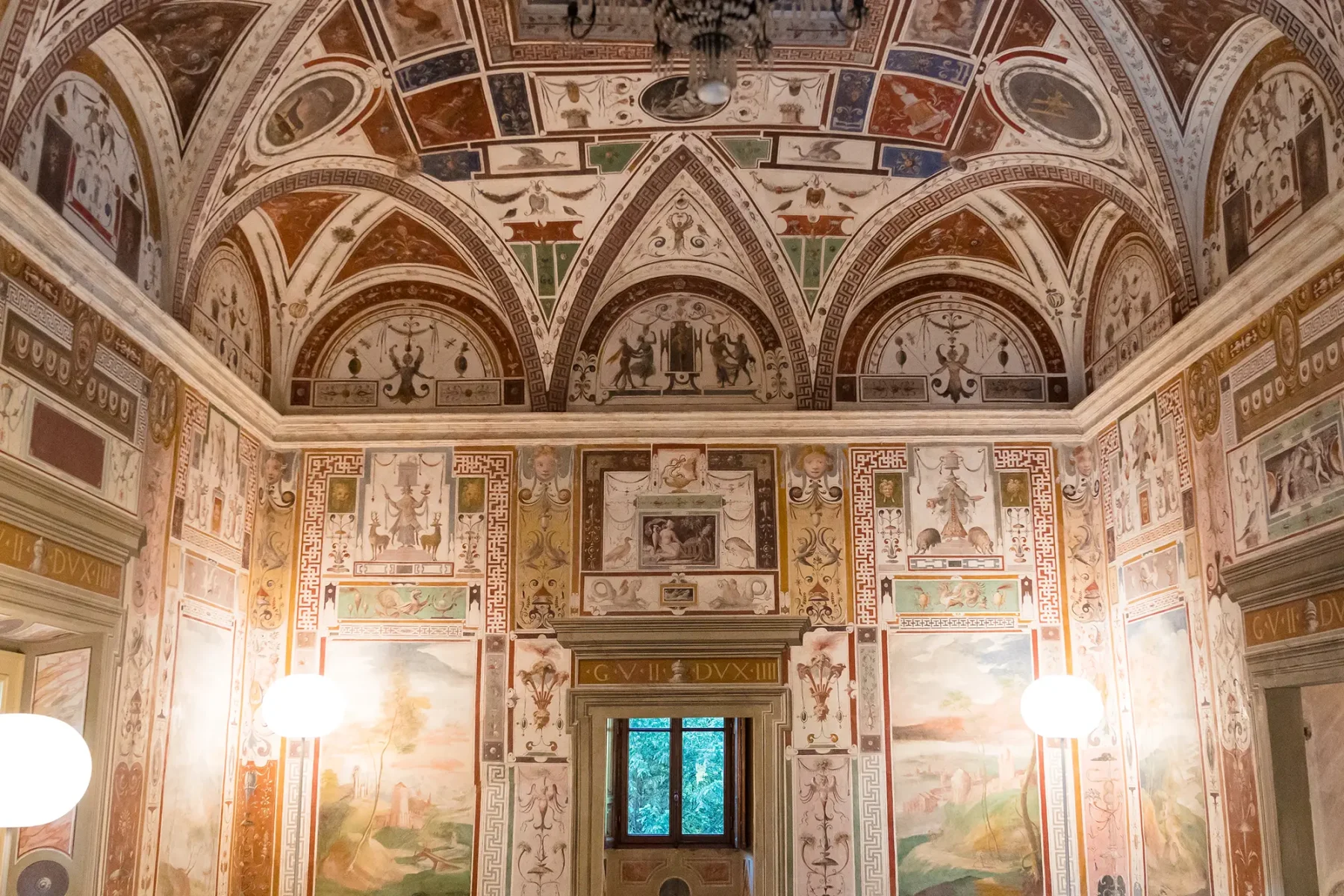
The main floor of Villa Miralfiore is an emblematic example of mannerist taste, characterised by rich and detailed decorations that capture the visitor's attention, inviting him to explore the figurations and ornamentation that animate the ceilings and walls. The Salone delle Feste, the largest of the rooms, features references to Duke Guidubaldo II, such as the symbol of the overturned bombard on the architraves of the doors. Above the entrance door, a 1906 inscription attributes the decorations to the Zuccari brothers. On the ceiling, an oval depicts Prometheus stealing fire from the gods, a symbol of human progress, surrounded by zodiac signs and figures such as Abundance, Apollo, Vulcan and Diana. The vaults, made of a light structure of reeds and plaster(camorcanna), have an exclusively decorative function.
Room with "Weapon Motifs"
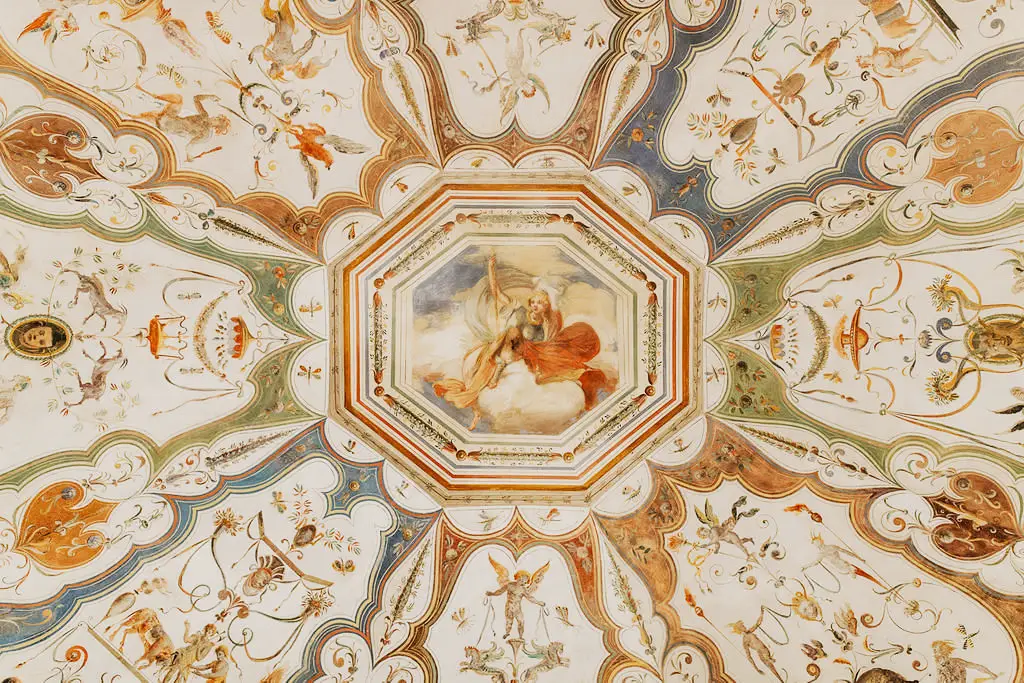
The main hall leads to a second, smaller room, entirely frescoed in shades of red and blue and covered with an octagonal cross vault with grotesque motifs that will continue in a unicum with all the other rooms on the Piano Nobile. The decoration makes explicit reference to the duke's warrior virtues, there are in fact several panels depicting various types of weapons and, in the centre of the ceiling, in an octagonal panel defined by a pleasant succession of frames, a reference to classical mythology with the goddess Athena. The reference to Athena, the Greek goddess of wisdom, the arts and strategy in battle, is precise. Very interesting are the panels on the walls representing landscapes with scenes of camps and soldiers.
Room of Duchess Vittoria Farnese
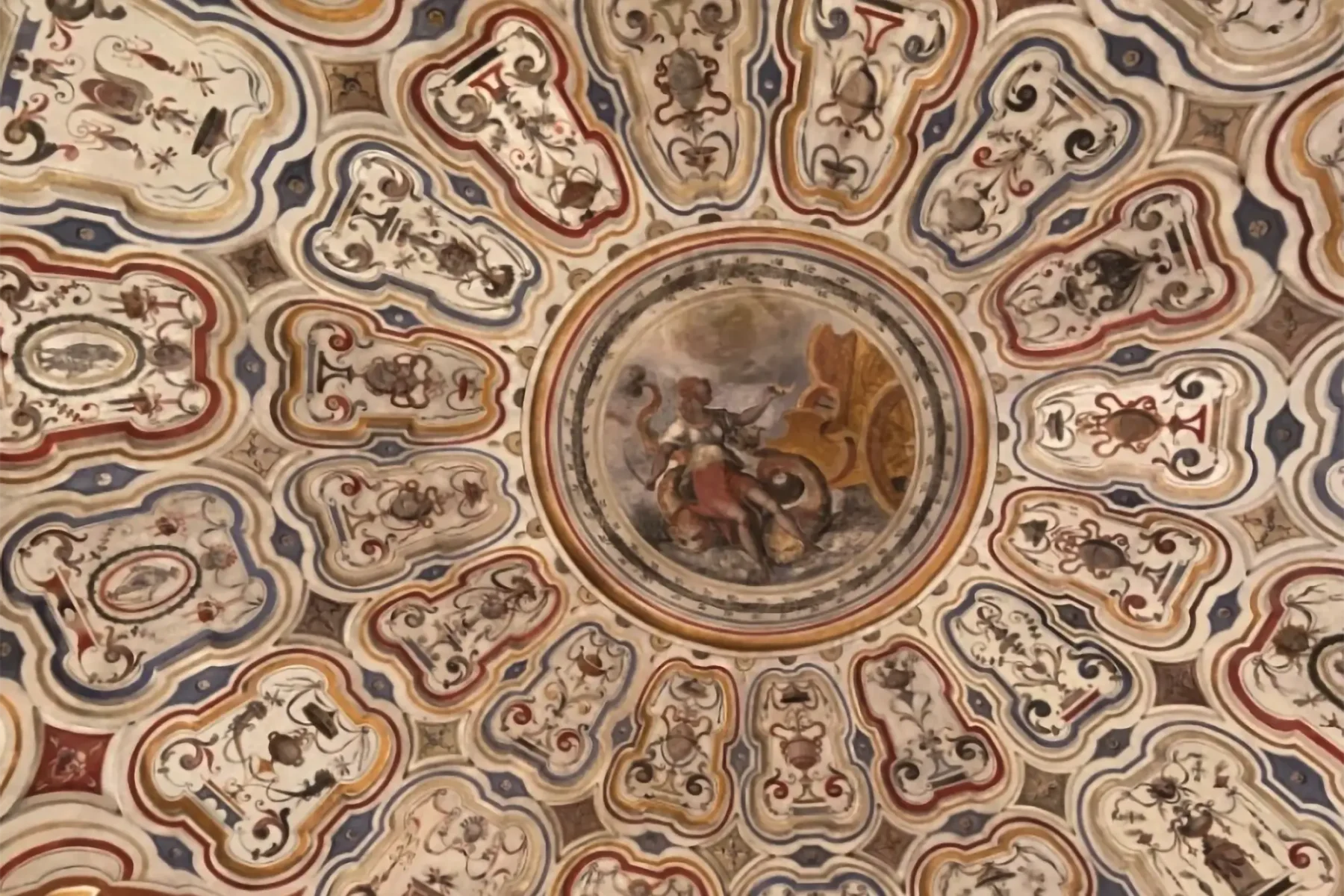
From the Room with the Motifs of Arms one passes to a third room dedicated to Duchess Vittoria Farnese, second wife of Guidubaldo II°. The room has a splendid domed ceiling richly decorated with grotesques with another classical motif in the centre, in a circle: a triumphal chariot with Diana. Directing the observer's attention to the centre of the ceiling is a series of geometric motifs in perspective, the shape of which is vaguely reminiscent of that of the Rocca Costanza. The connection between the dome and the vertical walls is resolved with the corner solution with the shell motif, very similar to that used in the Ducal Palace in Pesaro. The frescoes on the walls have unfortunately been heavily damaged by infiltration and mould, with detachment and loss of pigmentation. However, the landscape sections still visible reveal an interesting graphic attempt to give spatial continuity to the landscape narrative with the continuation of the representation from one wall to the adjacent one without interruptions of any kind. The tromp l'oeil motif (deceiving the eye) created at the entrance door to the room with the motifs of the three goals and the inverted bombard is original.
Room with Apollo Driving the Sun Chariot
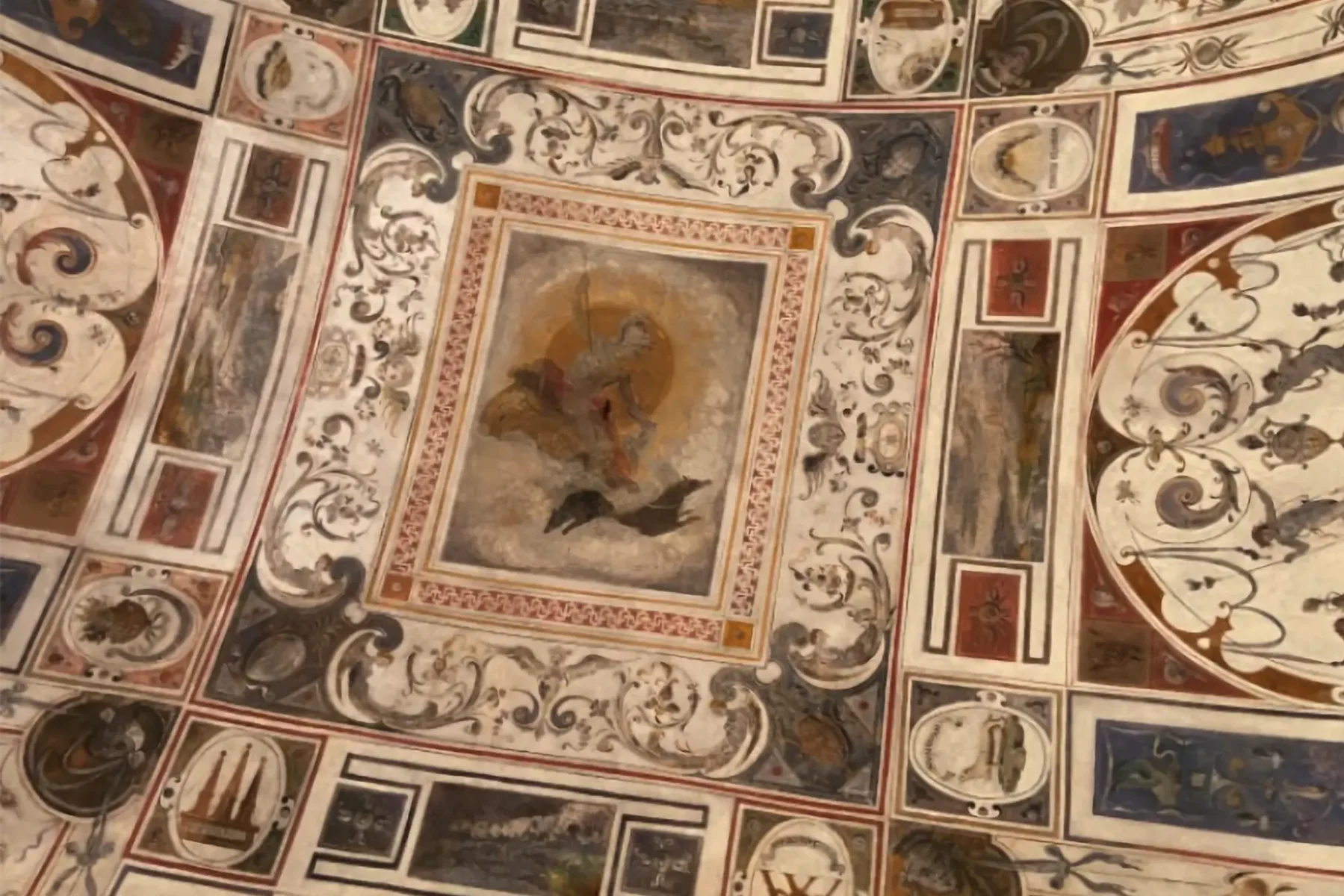
The room dedicated to Duchess Vittoria leads to another room in which the ceiling, also richly decorated with grotesques like the previous ones, features a depiction of Apollo intent on driving the golden 'chariot of the sun'. This iconographic motif is very frequent in the decoration of aristocratic residences between the 16th and 17th century. The literary source is Ovid's Metamorphoses, and the allusion to identifying the shining god with the commissioner of the work responds well to the need for self-celebration so dear to the ruling class of that historical period. Worth noting in the perfect squares of the ceiling is the insertion of small squares with elegant ephemeral architecture and, in the intersections, small squares again containing the Roveresque feats of the goals, the Gordian knot, the temples of honour and virtue and the "from safe rust". The white stucco corbels, used as connecting elements between the ceiling and walls, are valuable, and the ovals with monochrome scenes in shades of red in the Zuccari manner are interesting.
Room of Jupiter
